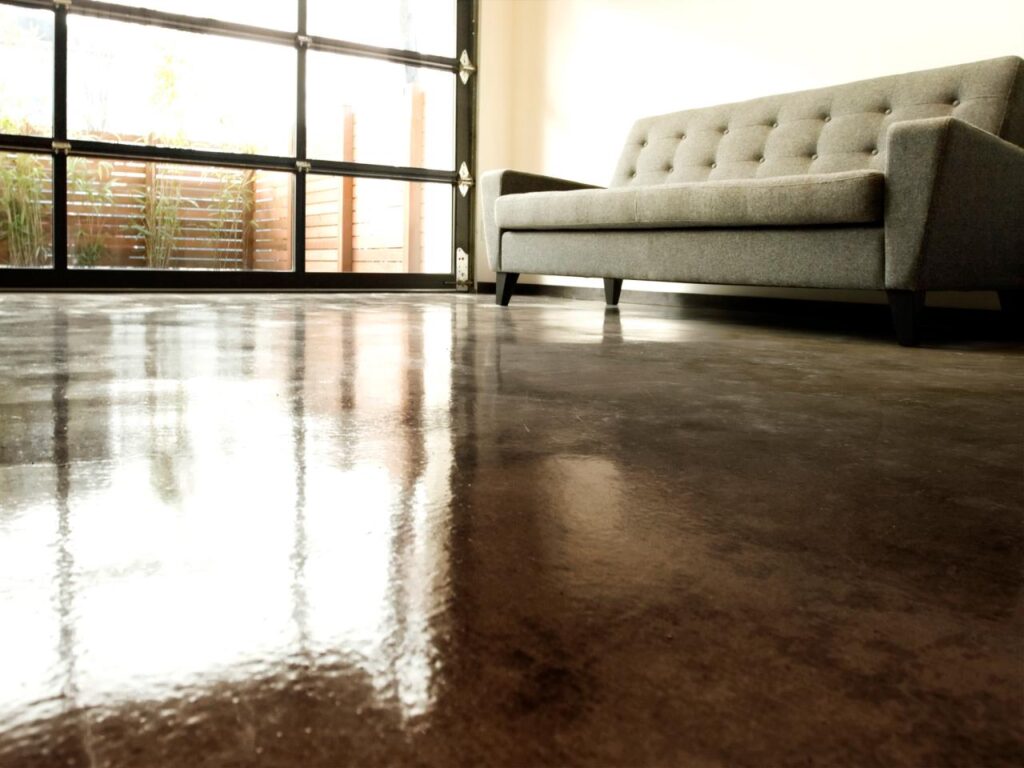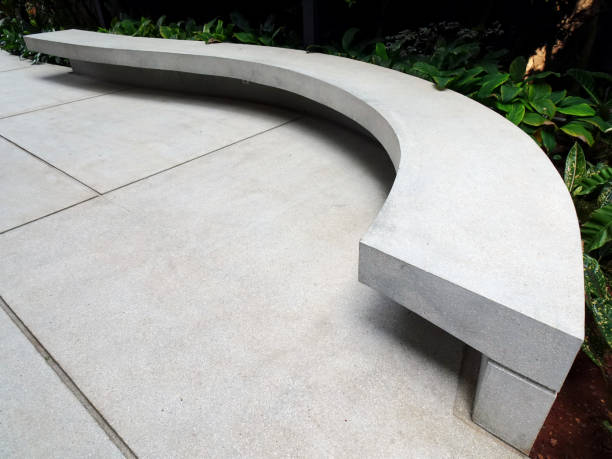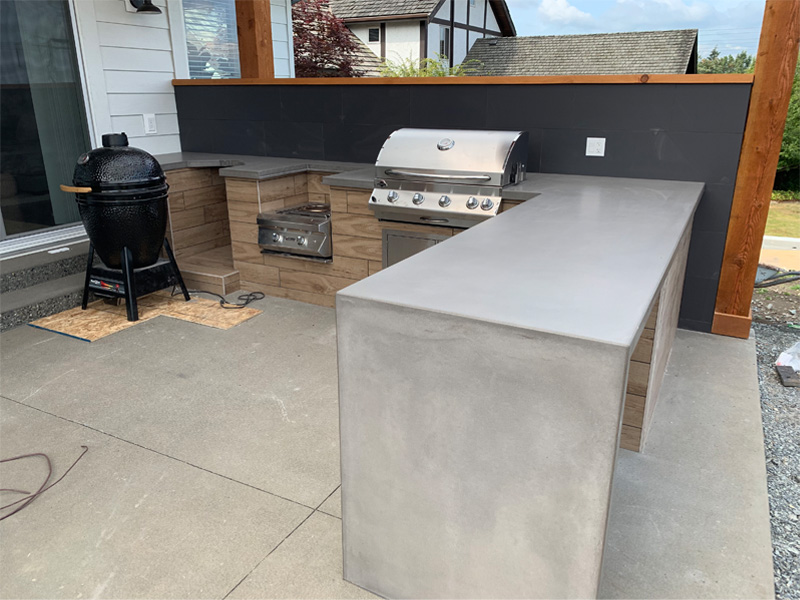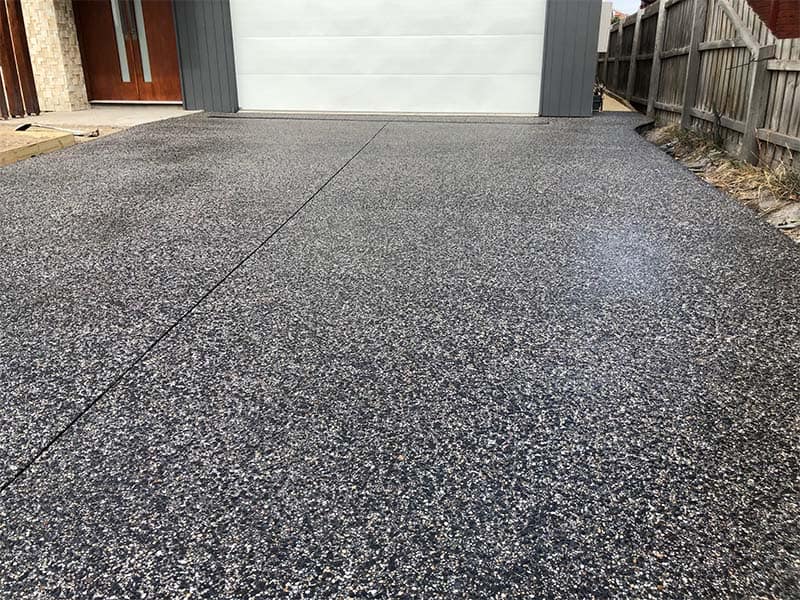Welcome to our comprehensive guide on concrete driveways and the crucial role of joints in maintaining their integrity and longevity. If you’ve ever wondered why some driveways develop unsightly cracks while others remain smooth and sturdy, this article is for you. We’ll delve into the importance of joints in concrete driveways, exploring how they prevent cracking, manage stress points, and ultimately extend the lifespan of your driveway. By the end, you’ll have a clear understanding of why joints are essential and how they contribute to the durability and aesthetic appeal of your concrete driveway. So, whether you’re planning a new driveway or looking to maintain an existing one, read on to discover everything you need to know about concrete driveway joints.
Joints in a concrete driveway are essential for preventing cracks and managing the natural expansion and contraction of the concrete. They act as deliberate weak points, allowing the concrete to move slightly without causing damage. By properly installing control, expansion, and contraction joints, homeowners can significantly extend the lifespan and maintain the aesthetic appeal of their concrete driveways.
- Understanding Concrete Driveways
- The Role Of Joints In Concrete Driveways
- Benefits Of Having Joints In Concrete Driveways
- How To Properly Install Joints In A Concrete Driveway
- Maintenance Tips For Concrete Driveways With Joints
- Alternatives To Joints In Concrete Driveways
- Expert Opinions And Case Studies
- FAQs: About Should There Be Joints In A Concrete Driveway
- What are concrete driveway joints?
- Why are joints necessary in concrete driveways?
- What types of joints are used in concrete driveways?
- How are control joints different from expansion joints?
- How often should joints be placed in a concrete driveway?
- Can I add joints to an existing concrete driveway?
- What materials are used for expansion joints in concrete driveways?
- How do I maintain joints in my concrete driveway?
- What happens if I don’t include joints in my concrete driveway?
- Can joints affect the appearance of my concrete driveway?
- Conclusion
Understanding Concrete Driveways
What is a Concrete Driveway?
A concrete driveway is a popular and durable option for homeowners looking to pave the area leading to their garages or homes. Defined as a solid surface made from a mixture of cement, water, and aggregates like sand and gravel, concrete driveways are known for their strength and longevity. They are commonly used not only for residential driveways but also for commercial properties and public spaces due to their ability to withstand heavy loads and frequent use.
Benefits of Concrete Driveways
Durability: One of the primary advantages of a concrete driveway is its durability. Concrete is a robust material that can endure various weather conditions, from scorching summers to freezing winters, without deteriorating. This makes it a reliable choice for regions with extreme weather variations.
Low Maintenance: Unlike other driveway materials, concrete requires minimal maintenance. Once installed, a concrete driveway can last for decades with little upkeep. Regular cleaning and occasional sealing are typically enough to keep it in excellent condition. This low maintenance aspect makes it a cost-effective option in the long run.
Aesthetic Appeal: Concrete driveways offer a wide range of design possibilities. They can be customized with different finishes, colors, and patterns to complement the architectural style of your home. Stamped concrete, for example, can mimic the appearance of brick, stone, or even wood, providing an elegant and unique look.
Environmental Benefits: Concrete driveways are also environmentally friendly. They reflect more light than asphalt, which helps reduce the urban heat island effect. Additionally, concrete can be made with recycled materials, further reducing its environmental footprint.
Common Issues with Concrete Driveways
Cracking: Despite its durability, concrete is prone to cracking over time. This can be due to various factors such as temperature fluctuations, ground movement, or improper installation. While small cracks can be repaired easily, larger ones may require professional attention.
Weather Damage: In regions with harsh winters, freeze-thaw cycles can cause damage to concrete driveways. Water can seep into the concrete, and when it freezes, it expands, leading to cracks and surface spalling. Applying a high-quality sealant can help mitigate this issue.
Wear and Tear: Over time, constant exposure to vehicles, foot traffic, and environmental elements can cause wear and tear on a concrete driveway. This might result in surface discoloration, minor pitting, or the need for resurfacing to maintain its appearance and functionality.
In conclusion, concrete driveways are a practical and aesthetically pleasing choice for many homeowners. They offer numerous benefits, including durability, low maintenance, and customizable design options. However, like any material, they also come with their set of challenges, such as cracking and weather-related damage. Understanding these aspects can help you make an informed decision and ensure your driveway remains in top condition for years to come.

The Role Of Joints In Concrete Driveways
What Are Joints?
Joints in concrete driveways are intentional breaks placed at specific intervals to manage the natural behavior of the material. Concrete, like many other building materials, expands and contracts due to temperature changes. Without joints, these expansions and contractions can cause the concrete to crack in random places. There are three main types of joints used in concrete driveways: control joints, expansion joints, and contraction joints.
Purpose of Joints
The primary purpose of joints in concrete driveways is to prevent unsightly cracks and to manage the stresses that concrete undergoes. By allowing for controlled movement, joints accommodate the natural expansion and contraction of concrete. They help in managing stress points within the slab, ensuring that any potential cracking occurs along the joints rather than in random, uncontrolled areas. This not only maintains the structural integrity of the driveway but also preserves its aesthetic appeal.
Types of Joints Explained
Control Joints
Control joints, also known as contraction joints, are placed at regular intervals to guide the cracking process. As concrete cures and undergoes shrinkage, control joints create a weakened plane where the concrete is more likely to crack in a straight line. These joints are typically sawed into the concrete surface or formed using a grooving tool. The placement of control joints is crucial; they should be spaced at distances of about 10 to 15 feet apart and should be cut to a depth of one-quarter of the slab’s thickness. This strategic placement ensures that the cracks form in a controlled manner, maintaining the driveway’s appearance and structural stability.
Expansion Joints
Expansion joints are designed to absorb the expansion and contraction of concrete due to temperature changes. These joints are placed at the junctions where the concrete meets another structure, such as a garage floor or a sidewalk, and at large sections of the driveway. Expansion joints are filled with a compressible material, such as asphalt-impregnated fiberboard, rubber, or cork, which allows the concrete to expand without causing damage. This type of joint is essential in preventing the concrete from pushing against adjacent structures, which can lead to cracks and other forms of damage.
Contraction Joints
Contraction joints are similar to control joints but serve a slightly different purpose. These joints are used to manage the natural shrinkage of concrete as it cures. While control joints are designed to guide cracking, contraction joints allow for the concrete to contract and reduce internal stress. The placement of contraction joints is often determined by the size and shape of the driveway. For instance, in a large, square driveway, contraction joints may be placed in a grid pattern to evenly distribute the stresses. These joints are typically formed during the initial pouring of the concrete and are crucial in maintaining the integrity of the driveway over time.
By understanding the role and proper placement of joints in concrete driveways, homeowners can ensure a long-lasting, durable surface that remains free of unsightly cracks and damage. Properly installed joints not only enhance the functionality of the driveway but also contribute to its overall aesthetic appeal, making them a critical component in concrete construction.

Benefits Of Having Joints In Concrete Driveways
Prevention of Cracking
Concrete is a remarkably strong and durable material, but it isn’t immune to the effects of natural movements. Over time, factors like temperature changes, moisture levels, and even the weight of vehicles can cause concrete to expand and contract. Without proper management, these movements can lead to unsightly and potentially damaging cracks.
This is where joints come into play. Joints in concrete driveways act as a controlled break in the slab, allowing for these natural movements to occur without causing random cracking. By incorporating joints, the concrete has predefined areas where it can safely expand and contract, effectively managing the stress that would otherwise lead to fractures. This not only preserves the structural integrity of the driveway but also maintains its appearance, avoiding the jagged and uneven lines that are a hallmark of unplanned cracking.
Longevity and Durability
Incorporating joints into a concrete driveway is not just about preventing cracks; it’s also about enhancing the overall lifespan of the driveway. Joints allow for controlled movement, which reduces the stress on the concrete. This stress reduction means the concrete can withstand the pressures of environmental changes and heavy usage for a longer period.
Without joints, the constant pressure from expansion and contraction can weaken the concrete over time, leading to more frequent repairs and, eventually, the need for a complete replacement. By strategically placing joints, you effectively extend the driveway’s lifespan, making it a more durable and cost-effective solution in the long run. This proactive approach ensures that your driveway remains functional and safe for many years, providing a better return on your investment.
Aesthetic and Functional Benefits
Beyond the structural advantages, joints in concrete driveways also offer significant aesthetic and functional benefits. From a visual standpoint, joints can be designed to complement the overall look of your driveway. They can be incorporated into patterns or designs that enhance the curb appeal of your property, adding a touch of sophistication and order.
Functionally, joints contribute to maintaining the smooth and even surface of the driveway. By preventing random cracks, joints ensure that the driveway remains level and free from tripping hazards. This is particularly important for both safety and ease of use. A well-maintained driveway not only looks good but also provides a stable and reliable surface for vehicles and pedestrians alike.
In summary, the benefits of having joints in concrete driveways are multifaceted. They play a crucial role in preventing cracks by allowing controlled movement, thereby extending the lifespan and durability of the driveway. Additionally, they offer aesthetic and functional advantages, ensuring that the driveway remains both attractive and safe over time. Incorporating joints is a smart strategy for anyone looking to invest in a long-lasting and visually appealing concrete driveway.

How To Properly Install Joints In A Concrete Driveway
Planning the Layout
When it comes to installing joints in a concrete driveway, the first step is meticulous planning. The layout of the joints significantly affects the durability and appearance of your driveway. Consider the following factors:
Size and Shape: The size and shape of the driveway dictate the number and placement of joints. Larger driveways require more joints to prevent cracking. Typically, joints should be placed no more than 10 feet apart.
Climate: Climate plays a crucial role in joint placement. In areas with extreme temperature fluctuations, joints should be closer together to accommodate the expansion and contraction of the concrete.
Traffic Patterns: Consider the expected traffic patterns on the driveway. Joints should be placed where the concrete is likely to experience the most stress, such as where vehicles will turn or stop.
By thoughtfully planning the layout, you can ensure that the joints will effectively manage the stress and movement of the concrete, extending the lifespan of your driveway.
Materials and Tools Needed
Having the right materials and tools is essential for creating effective and durable joints in your concrete driveway. Here’s what you’ll need:
Materials:
- Concrete mix
- Joint filler or sealant
- Backer rod (if needed)
Tools:
- Chalk line or string line
- Measuring tape
- Concrete saw with a diamond blade
- Edging tool
- Broom or brush
- Protective gear (gloves, safety glasses, dust mask)
Ensure that all tools are in good working condition and that you have enough materials to complete the job without interruptions.
Step-by-Step Installation Process
Now, let’s dive into the step-by-step process of installing joints in your concrete driveway.
1. Mark the Joints: Using a chalk line or string line, mark the locations where the joints will be cut. Ensure that the lines are straight and evenly spaced according to your planned layout.
2. Cut the Joints: Equip your concrete saw with a diamond blade and set it to the appropriate depth, typically one-quarter of the slab thickness. Carefully cut along the marked lines. Maintain a steady hand to ensure straight cuts.
3. Finish the Joints: After cutting, use an edging tool to smooth the edges of the joints. This helps to prevent chipping and creates a neat, finished look.
4. Clean the Joints: Remove any debris from the joints using a broom or brush. This step is crucial to ensure proper adhesion of the joint filler.
5. Fill the Joints: Insert a backer rod if needed to control the depth of the sealant. Then, apply a joint filler or sealant to the joints. Use a caulking gun for even application. Smooth the filler with a putty knife to ensure it is flush with the surface of the driveway.
Following these steps meticulously will help you create joints that are both functional and aesthetically pleasing.
Common Mistakes to Avoid
Installing joints in a concrete driveway is a task that requires precision. Here are some common mistakes to avoid:
Incorrect Joint Placement: Placing joints too far apart or in the wrong locations can lead to uncontrolled cracking. Always adhere to the planned layout.
Improper Cutting Depth: Cutting joints too shallow or too deep can compromise their effectiveness. Ensure the saw blade is set to the correct depth.
Skipping Cleaning: Failing to clean the joints before filling can result in poor adhesion of the filler, reducing its effectiveness.
Using the Wrong Filler: Not all joint fillers are created equal. Choose a filler that is appropriate for your climate and traffic conditions.
By being aware of these common mistakes and taking steps to avoid them, you can ensure that your concrete driveway joints will perform their intended function and enhance the longevity of your driveway.
In summary, proper joint installation in a concrete driveway involves careful planning, the right materials and tools, a detailed installation process, and avoiding common mistakes. By following these guidelines, you can create a durable and visually appealing concrete driveway that will stand the test of time.
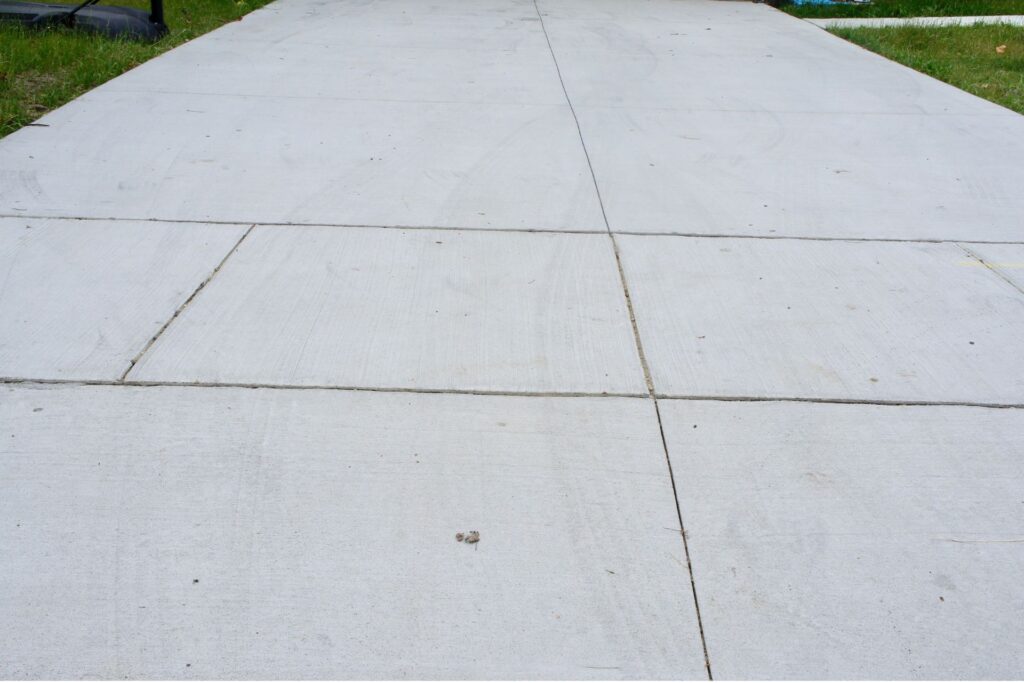
Maintenance Tips For Concrete Driveways With Joints
Maintaining a concrete driveway with joints is essential to ensure its longevity and aesthetic appeal. Concrete joints, which are crucial for preventing cracks and structural damage, require regular attention. Here are some effective maintenance tips to keep your driveway in top shape.
Regular Inspection
Regular inspection of your concrete driveway is the first step in a proper maintenance routine. Inspecting your driveway periodically helps you identify potential problems early before they escalate into costly repairs.
What to Look For
Cracks and Gaps: Check for any cracks or gaps that may have formed around the joints. These can lead to water infiltration and further damage.
Weeds and Grass: Look for any weeds or grass growing in the joints. Vegetation can widen the gaps and weaken the concrete.
Surface Damage: Inspect the surface for any signs of wear and tear, such as chipping or spalling, particularly around the joints.
When to Inspect
Seasonal Changes: Conduct inspections at least twice a year, preferably in spring and fall. Seasonal changes can cause the concrete to expand and contract, making these times ideal for inspection.
After Heavy Rain or Snow: After significant weather events, inspect the driveway to ensure that water hasn’t caused any damage to the joints.
Cleaning and Sealing
Cleaning and sealing your concrete driveway are critical steps in maintaining the joints and preventing damage. Proper cleaning removes debris and contaminants while sealing protects the concrete from moisture and harsh weather conditions.
Best Practices for Cleaning
Sweep Regularly: Use a broom to sweep the driveway regularly, removing dirt, leaves, and other debris that can accumulate in the joints.
Pressure Washing: Occasionally use a pressure washer to deep clean the driveway. This helps remove stubborn stains and dirt that sweeping alone cannot handle.
Use Mild Detergents: When necessary, use a mild detergent with the pressure washer to clean oil stains or other tough spots. Avoid harsh chemicals that can degrade the concrete.
Best Practices for Sealing
Choose the Right Sealant: Use a high-quality concrete sealant specifically designed for driveways. There are various types of sealants, including acrylic, epoxy, and penetrating sealers.
Apply Regularly: Reapply the sealant every 2-3 years or as recommended by the manufacturer. This helps maintain a protective barrier against water, chemicals, and UV rays.
Proper Application: Ensure the driveway is thoroughly cleaned and completely dry before applying the sealant. Use a roller or sprayer for an even application, and follow the manufacturer’s instructions for drying time.
Repairing Damaged Joints
Addressing damaged joints promptly can prevent minor issues from becoming major problems. Proper repair techniques ensure the structural integrity of your driveway and extend its lifespan.
How to Fix Issues
Fill Cracks: For small cracks in the joints, use a concrete crack filler or caulk. Clean the crack thoroughly, then apply the filler, smoothing it out with a putty knife. Allow it to dry completely before using the driveway.
Reseal Joints: If the sealant in the joints has deteriorated, clean out the old sealant and reseal the joints with a new, high-quality sealant. This helps prevent water infiltration and further damage.
Professional Repairs: For significant damage or if you’re unsure about the repair process, consider hiring a professional. They can assess the damage and provide a long-lasting solution, ensuring your driveway remains in excellent condition.
By following these maintenance tips, you can keep your concrete driveway with joints looking great and performing well for years to come. Regular inspections, cleaning and sealing, and timely repairs are key to preserving the durability and appearance of your driveway.
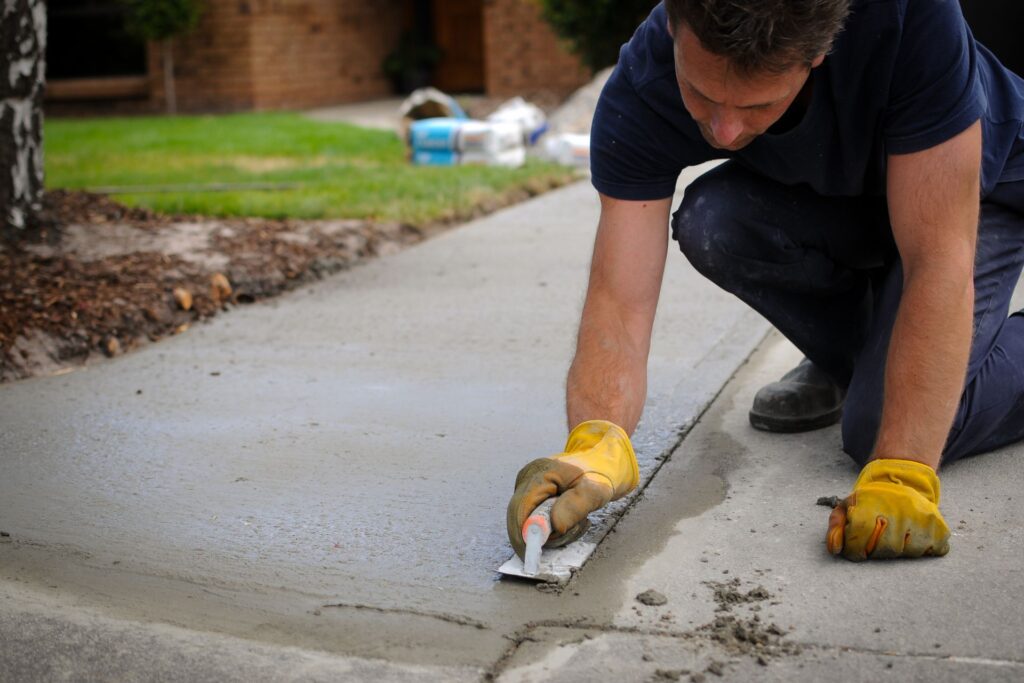
Alternatives To Joints In Concrete Driveways
When constructing concrete driveways, joints are commonly used to control cracking. However, there are several alternatives to using joints in concrete driveways that can provide different benefits and aesthetic options. In this section, we’ll explore the concept of concrete without joints and compare other materials and methods such as pavers and asphalt.
Concrete Without Joints
Pros and Cons
Pros:
1. Aesthetic Appeal: Concrete without joints creates a smooth, uninterrupted surface that can enhance the overall look of your driveway. This seamless appearance is particularly appealing for modern and minimalist designs.
2. Reduced Maintenance: Without joints, there are fewer places for debris and weeds to accumulate. This can make the driveway easier to clean and maintain.
3. Enhanced Durability: Properly installed jointless concrete can be more durable because there are no weak points where cracks typically initiate. This can result in a longer-lasting surface.
Cons:
1. Potential for Cracking: One of the primary reasons for using joints is to control cracking. Without joints, there is a higher risk of random cracking, which can be unsightly and may require repairs.
2. Higher Initial Cost: Creating a jointless concrete driveway may require additional reinforcement and higher-quality materials to prevent cracking, which can increase the initial cost.
3. Specialized Installation: Achieving a successful jointless concrete driveway often requires specialized techniques and experienced contractors. This can limit your options when choosing a contractor and potentially increase the cost of installation.
Other Materials and Methods
When considering alternatives to joints in concrete driveways, it’s also worth looking at other materials and methods. Here, we’ll compare concrete with pavers and asphalt, two popular alternatives.
Pavers
Pros:
1. Flexibility: Pavers are individual units, so they can move slightly under pressure without cracking. This flexibility can be beneficial in areas with fluctuating temperatures and ground movement.
2. Easy Repairs: If a paver becomes damaged, it can be easily replaced without affecting the surrounding area. This makes maintenance simpler and more cost-effective.
3. Variety of Designs: Pavers come in a wide range of colors, shapes, and patterns, allowing for highly customizable designs that can complement any home style.
Cons:
1. Weed Growth: The gaps between pavers can allow weeds to grow, which requires regular maintenance to keep the driveway looking tidy.
2. Higher Installation Cost: The labor-intensive process of laying pavers can make the initial installation more expensive compared to other materials.
3. Potential for Movement: Without proper installation, pavers can shift over time, leading to an uneven surface that may need re-leveling.
Asphalt
Pros:
1. Cost-Effective: Asphalt driveways are generally less expensive to install than concrete or pavers. This can be a significant advantage for homeowners on a budget.
2. Quick Installation: Asphalt driveways can be installed relatively quickly, making it a convenient option for those needing a new driveway in a short timeframe.
3. Smooth Surface: Asphalt provides a smooth, continuous surface that is comfortable to drive on and aesthetically pleasing.
Cons:
1. Shorter Lifespan: Asphalt driveways typically have a shorter lifespan than concrete, requiring more frequent maintenance and eventual replacement.
2. Maintenance Requirements: Asphalt needs regular sealing to maintain its appearance and durability. This can add to the long-term maintenance costs.
3. Heat Sensitivity: In hot climates, asphalt can become soft and pliable, leading to ruts and impressions from heavy vehicles.
Choosing the right alternative to joints in concrete driveways depends on your specific needs and preferences. Concrete without joints offers a sleek, modern look but may come with higher costs and the risk of cracking. Pavers provide design flexibility and easy repairs but require regular maintenance to prevent weed growth. Asphalt is a cost-effective and quick-to-install option but has a shorter lifespan and requires regular sealing. By weighing the pros and cons of each material, you can make an informed decision that best suits your driveway needs.

Expert Opinions And Case Studies
In any discussion about residential driveways, incorporating expert opinions and real-life examples can provide valuable insights and credibility. Here’s an expanded explanation of this section:
Interviews with Concrete Experts
When it comes to understanding the necessity of joints in concrete driveways, who better to consult than industry experts? Interviews with concrete professionals offer a wealth of knowledge and practical advice that can clarify the importance and implementation of joints.
Insights from Professionals on the Necessity of Joints
Concrete experts can shed light on why joints are crucial in driveway construction. According to professionals, joints are essential for preventing cracks and enhancing the longevity of the driveway. They act as predetermined weak points where the concrete can crack in a controlled manner, thus avoiding random cracks that can compromise the structural integrity of the driveway. Experts can also discuss different types of joints—such as control joints, expansion joints, and construction joints—and explain when and where each type should be used. Their insights can help homeowners understand the technical aspects of driveway construction and make informed decisions.
Real-Life Examples
Real-life examples and case studies provide tangible proof of the benefits and potential drawbacks of using joints in concrete driveways. These examples can illustrate the practical application of expert advice and offer a clearer picture of what homeowners can expect.
Case Studies of Driveways with and Without Joints
Examining case studies of driveways with and without joints can highlight the differences in performance and durability. For instance, a case study of a driveway with properly placed control joints might show minimal cracking and a smooth surface even after several years of use. In contrast, a driveway without joints may exhibit extensive random cracking and uneven surfaces, demonstrating the negative impact of neglecting this crucial step in construction.
By detailing these case studies, homeowners can see firsthand the advantages of including joints in their driveway projects. Such real-life examples can also address common concerns and misconceptions, providing a more comprehensive understanding of the role of joints in maintaining the integrity and appearance of a concrete driveway.
Incorporating expert opinions and real-life examples in the discussion about concrete driveways not only adds depth to the information but also helps to build trust with the audience. By presenting insights from professionals and showcasing tangible outcomes through case studies, homeowners can gain a better appreciation of the importance of joints in ensuring a durable and aesthetically pleasing driveway.

FAQs: About Should There Be Joints In A Concrete Driveway
What are concrete driveway joints?
Concrete driveway joints are deliberate separations in the concrete that allow for controlled movement due to temperature changes, moisture variations, and other environmental factors. They help prevent unsightly and damaging cracks.
Why are joints necessary in concrete driveways?
Joints are necessary to manage the natural expansion and contraction of concrete. Without joints, the stress from these movements would cause random cracking, which can compromise the driveway’s durability and appearance.
What types of joints are used in concrete driveways?
The three main types of joints used in concrete driveways are control joints, expansion joints, and contraction joints. Control joints help manage cracking by allowing concrete to crack in predetermined locations. Expansion joints allow for the expansion and contraction of concrete, and contraction joints help manage shrinkage stress.
How are control joints different from expansion joints?
Control joints are placed to control where the concrete cracks, usually created by saw cutting or tooling during the curing process. Expansion joints are placed to accommodate the expansion and contraction of concrete slabs, usually made of a compressible material like foam or rubber.
How often should joints be placed in a concrete driveway?
The spacing of joints depends on the size and shape of the driveway, as well as the type of concrete used. A general rule is to place control joints at intervals of 10-15 feet for driveways. It’s best to consult with a professional to determine the ideal spacing for your specific project.
Can I add joints to an existing concrete driveway?
Yes, joints can be added to an existing concrete driveway by saw cutting, but it’s best done during the initial installation. Adding joints later can help control further cracking, but it may not be as effective as pre-planned joint placement.
What materials are used for expansion joints in concrete driveways?
Common materials for expansion joints include asphalt-impregnated fiberboard, foam, rubber, and cork. These materials are compressible and can absorb the expansion and contraction of the concrete.
How do I maintain joints in my concrete driveway?
Regular maintenance involves inspecting the joints for damage or debris, cleaning them, and resealing if necessary. Keeping joints clear of debris and well-sealed prevents water infiltration and freeze-thaw damage.
What happens if I don’t include joints in my concrete driveway?
Without joints, a concrete driveway is more likely to develop random cracks due to uncontrolled stress from temperature changes and other factors. These cracks can reduce the driveway’s lifespan and negatively impact its appearance.
Can joints affect the appearance of my concrete driveway?
Properly placed and well-maintained joints can actually enhance the appearance of a concrete driveway by giving it a more finished look and preventing random cracking. Decorative joint techniques can also be used to create aesthetically pleasing patterns.
Conclusion
In conclusion, incorporating joints in concrete driveways is essential for ensuring durability and preventing unsightly cracks. These joints accommodate natural expansion and contraction, making the driveway more resilient to temperature changes and heavy loads. By summarizing the benefits, we see that properly installed joints not only enhance the longevity of the driveway but also contribute to its overall aesthetic appeal. Therefore, it’s crucial for homeowners to consider integrating joints into their driveway designs. We encourage you to think about the long-term advantages and take action by sharing your experiences or reaching out to professionals for expert advice and installation services. Your driveway is an important part of your home’s exterior, and ensuring its durability with the right construction practices is a smart investment.
About the Author:
Mike Veail is a recognized digital marketing expert with over 6 years of experience in helping tradespeople and small businesses thrive online. A former quantity surveyor, Mike combines deep industry knowledge with hands-on expertise in SEO and Google Ads. His marketing strategies are tailored to the specific needs of the trades sector, helping businesses increase visibility and generate more leads through proven, ethical methods.
Mike has successfully partnered with numerous companies, establishing a track record of delivering measurable results. His work has been featured across various platforms that showcase his expertise in lead generation and online marketing for the trades sector.
Learn more about Mike's experience and services at https://theleadguy.online or follow him on social media:

